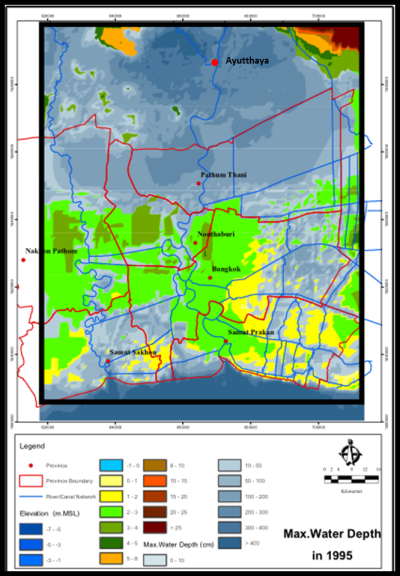Flooding in Thailand and Site Selection Due Diligence
 Tuesday, November 15, 2011 at 4:19PM |
Tuesday, November 15, 2011 at 4:19PM |  1 Comment
1 Comment Thailand provides a compelling value proposition for manufacturing firms, particularly as an alternative to China, India, and Malaysia. The country offers a strong workforce, solid infrastructure, and foreign firms may own 100% of their local operations, which is typically not possible in many competing locations. Thailand is politically stable (as it relates to foreign manufacturing firms) and has a long history of friendly relations with the West. Of course recent widespread flooding highlights one of the less appealing aspects of central Thailand. Which begs the question, why did so many sophisticated companies locate important facilities in the flood prone Chao Phraya River basin?
Disasters happen, and one can’t mitigate every risk, but the majority of are predictable and can either be avoided or properly planned for. The flooding Thailand appears to be an example of poor site selection and poor disaster planning and preparation. Thailand and greater Bangkok are prone to flooding. Much of the country is low lying land with large volumes of rain concentrated in a handful of months of the year. The Ayutthaya Province, home to over 11% of Thailand’s manufacturing, is particularly disposed to flooding. The Chao Phraya River bifurcates the province and the Province’s average elevation is only 20’ above sea level. According to a 2009 World Bank study, “In the Chao Phraya River Basin, there were exceptional large floods in 1942, 1978, 1980, 1983, 1995, 1996, 2002 and 2006.”
The 1995 floods were quite severe, with most of the Ayutthaya Province inundated. Existing industrial parks were threatened during these floods but escaped without significant damage. The attached map shows the extent of flooding in 1995, with areas surrounding the industrial parks under between six feet and 10 feet of water.

The current floods impacted thousands of firms including large multinational manufacturers, including Honda, Nikon, and Sony. These firms are a microcosm of Japanese manufacturing, companies that face rising costs and a strong Yen at home and have aggressively expanded production to other nations. Interestingly most of the firms impacted are Japanese, while many of the South Korean and American firms were located in other areas of Thailand.
Large organizations, government of private sector, disincentivize risk. The adage, “you don’t get fired for hiring IBM” is still pretty true today. In site selection, many companies follow their peers when siting new projects, particularly in foreign markets. This manifests itself in Thailand with most foreign corporations locating in state-sponsored industrial estates (as industrial parks are commonly called) located in 3-4 central provinces. The Thai government further drove this consolidation with incentives tied to locating in these industrial parks. Good reasons exist to locate near suppliers and competitors, but it shouldn’t take the place of proper due diligence.

Reader Comments (1)
Best 3D, 2D animation studio in Dubai, UAE and top corporate video production company in Bangalore and explainer video company in Chennai, India, Texas, Baltimore, USA & Abu Dhabi, Sharjah.